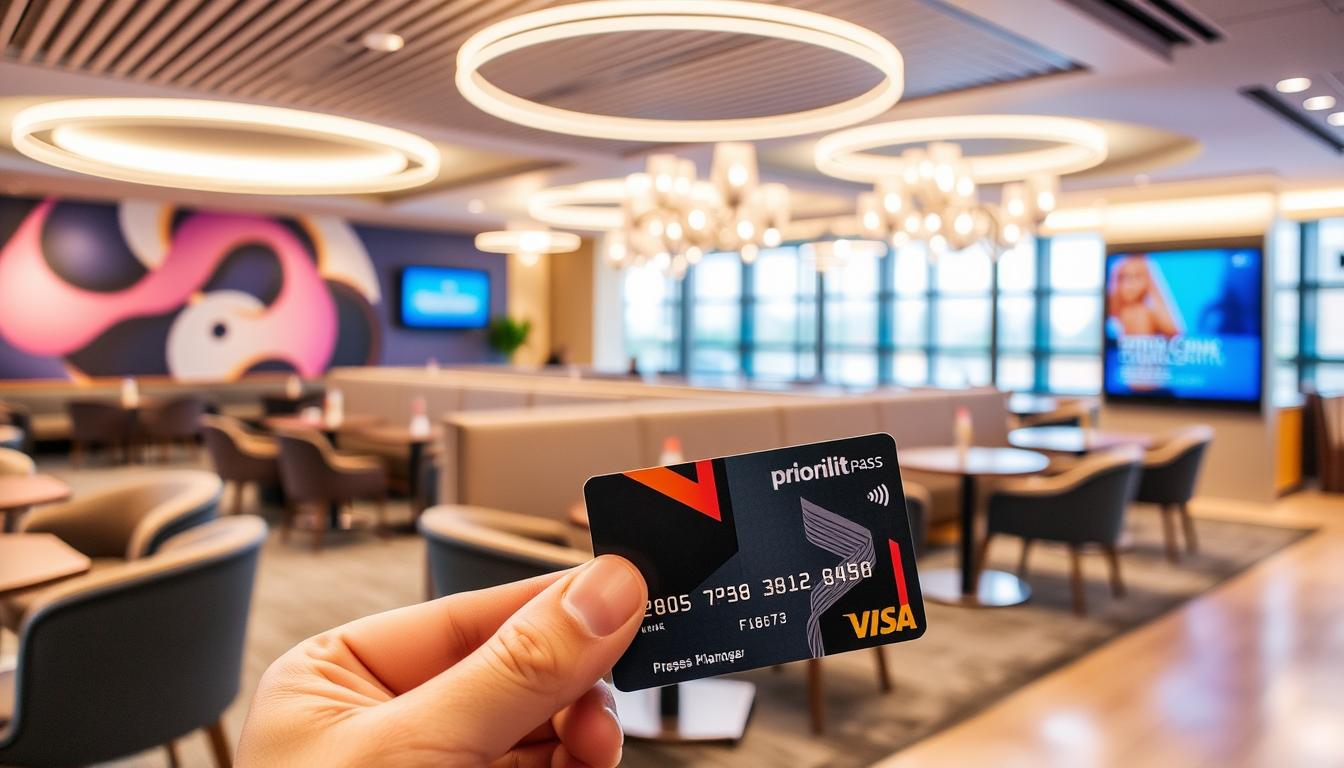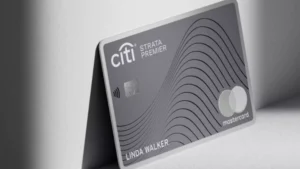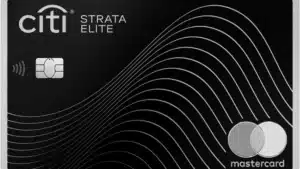Have you ever stood at the crossroads of cash back and travel rewards, wondering which path leads to the treasure trove of benefits tailored exactly for your lifestyle? As a globetrotter who has visited over 47 countries, I’ve faced this multiple times. Combining that with my expertise in finances and credit cards, the answer may be less about ‘either-or’ and more about ‘which-one-when.’ But how do you choose the best credit card that turns everyday spending into your greatest advantage?
Entering the arena of rewards cards is like stepping into a world where every purchase could inch you closer to your next big adventure or put some hard-earned dollars back into your pocket. Whether the allure of a cash back card tickles your fancy with up to 6% returns on your grocery hauls, or you dream of cutting down costs on your adventures with a robust travel card like the Chase Sapphire Preferred® Card, the debate of travel rewards vs cashback remains evergreen.
Now, pull up a chair and let’s unravel the threads. Will you join me in demystifying the perks and pitfalls of each, ensuring your credit card becomes a gateway to rewards, not regrets?
Let’s dive deep into the perennial question that plagues every savvy spender: “How do you harness the power of your credit card to unlock the world or to bolster your financial fortress?”
Stay tuned as we dive into the intricacies of each card type. From the simplicity of the Wells Fargo Active Cash® Card’s flat rate rewards to the potentially lucrative miles of the Capital One Venture Rewards Credit Card. Discover which is the missing puzzle piece to your financial mastery.
Introduction to Rewards Credit Cards
I’ve always been excited about using rewards credit cards to get more from our money. Choosing between a cash back credit card and a travel rewards credit card depends on how you spend and what you like. Whether you want cash back or miles for travel, knowing the basics is key.
Rewards credit cards give you benefits for your spending. You can get statement credit, cash back, or points and miles for travel. There’s a card for everyone, from points cards for travelers to cash back cards for everyday spending.
- Cash back credit cards give you 1% to 6% back, based on what you buy.
- Travel rewards cards let you earn points or miles for flights, hotels, and more.
- Some cards, like the Discover it® Miles, let you turn miles into cash back.
The first cash back card was introduced in the mid-1980s by Discover. This changed how we think about rewards. Today, there are many cards for different needs, from cash rewards to luxury travel.
Some cards have annual fees, like premium travel cards with extra perks. But many cash back cards don’t have fees. It’s important to think about fees and rewards when choosing a card.
When picking a rewards credit card, think about your financial goals and how you spend. Do you want cash back now or points for a trip? Each card has its own benefits. Let’s look at cash back and travel rewards in more detail to find the best card for you.
Understanding Cash Back Rewards
Exploring cash back rewards is exciting for those looking to save money. We’ll look at how these cards work, their benefits, and top cards that can help you save more.
How Do Cash Back Cards Work?
Cash back credit cards give you money back on what you spend. They offer extra points or cash back on things like gas, groceries, or dining. For example, the Citi Double Cash® Card gives you 2% cash back. This is 1% on your purchases and another 1% when you pay them off.
Benefits of Choosing Cash Back
Cash back cards often have great bonus points or offers. For example, the PayPal Cashback Mastercard® lets you earn 3% back when using PayPal. These cards usually have low or no annual fees, which is a big plus.
Examples of Top Cash Back Cards
- The Blue Cash Preferred® Card from American Express gives 6% cash back at U.S. supermarkets and 6% on select streaming services. It’s great for families.
- The Wells Fargo Active Cash® Card offers unlimited 2% cash rewards on all purchases. It’s perfect for those who want consistent rewards without tracking spending.
- The Chase Sapphire Reserve® lets you use rewards for travel or cash back. It’s very flexible, depending on your needs and goals.
Choosing the right cash back card depends on your spending and goals. Some cards offer high rewards in specific categories, while others give a flat rate on all purchases. Look at the rewards, APR, redemption options, and sign-up bonuses to get the most from your card.
Exploring Travel Rewards Cards
I love to book travel and see new places. Using travel rewards cards makes my trips better. These cards give me bonus points and extra benefits that save money and make travel fun.
Features of Travel Rewards Cards
Cards like the Chase Sapphire Preferred® Card and the Capital One Venture Rewards Credit Card are great. They work for both airline cards and hotel cards. They let me earn points on any travel purchase, not just with one airline or hotel.
This flexibility means I can book travel through many travel partners. It helps me get the most from my money.
Maximizing Travel Benefits and Perks
- Earning points on every purchase, including travel expenses.
- Getting bonus points through special offers or categories.
- Transferring points to partners for better value than usual.
Transferring points to airlines and hotels is a smart move. It makes my points worth more. For example, sending points to United or Marriott can lead to cheaper flights and nicer hotels.
Travel Card Examples for Frequent Flyers and Hotel Buffs
For those who fly a lot or stay in hotels, co-branded cards are great. They offer perks like free checked bags, priority boarding, and room upgrades. For example, airline cards make flying easier, while hotel cards give me special hotel benefits.
Travel rewards cards have changed how I travel. With cards like the Capital One Venture X Business, I earn unlimited miles. They make my trips more rewarding, fitting my lifestyle and preferences.
Lifestyle Considerations in Picking a Rewards Card
Choosing the right rewards credit card is a big decision. It depends on if you want points for travel or cash back to lower bills. Think about your daily spending and big financial goals.
Assessing Your Spending Habits
First, figure out where your money goes. Do you buy gadgets or eat out a lot? Travel a lot? Look for cards with lots of travel points.
Want something simple? A cash-back card might be better. It gives you clear benefits from your spending.
Goals: Travel Dreams vs. Practical Cash Returns
Want to travel or buy new gadgets? A travel rewards card could be perfect. But, if you want to save money on daily things, look for cards with high cash back.
The Discover it® Secured Credit Card and the Blue Cash Preferred® Card from American Express are good examples. They offer different benefits based on what you value.
The best card matches your lifestyle and financial plans. It makes every purchase count. Whether it’s for travel or saving money, the right card helps you achieve your goals.
Calculating the Value of Travel Rewards vs Cashback
When comparing travel rewards to cash back, many factors matter. Let’s look at what might sway your choice.
Earning ability] differs a lot between cash back and travel rewards. Cash back gives a set rate, like 1% to 5% back. This makes it easy to see how much you’ll earn. Travel rewards, like travel credits, can increase your earnings a lot. This is true when booking travel or using sign-up bonuses.
- Redemption Flexibility: Cash back cards let you use your rewards in many ways. You can get credits on statements or buy things through big retail sites. Travel rewards are best used for flights or hotel stays.
- Special Benefits: Some travel cards offer extra perks like travel insurance. They also might not charge foreign transaction fees. This makes them more valuable than just earning points.
- Annual Fees: Annual fees can affect how much you earn. Many cash back cards have no fees. But travel cards often have higher fees. These fees are worth it if the benefits and earnings are greater than the cost.
Choosing between cash back and travel rewards depends on your lifestyle and preferences. Travelers might find travel rewards more valuable. They offer high rewards on travel purchases and travel credits. But, if you don’t travel much, cash back might be better for you.
Understanding these details helps you pick the right credit card. Whether you want travel credits for trips or cash back for everyday spending, knowing these points helps you get the most from your card.
Redemption Options and Flexibility
Choosing a rewards card means looking at how you can use your rewards. Cash back cards and travel points cards are different. This choice depends on what you want to get from your rewards.
Cash Back Redemption Simplicity
Cash back rewards are easy to understand and use. For example, the Citi Double Cash® Card gives you 2% cash back on all purchases. This makes managing your money simpler.
Most cash back cards let you use rewards as a credit, deposit them in a bank, or get a check. This makes it easy to use your rewards right away. It also helps during tough financial times.
Travel Points for More Than Just Flights and Hotels
- Enhanced Value: Cards like Chase Sapphire Reserve® offer more value when booking through certain channels. For example, 60,000 points can be worth $900 if booked through Chase TravelSM.
- Varied Usage: Points can be used for more than just flights and hotels. They can be transferred to many airline and hotel loyalty programs. This can increase their value. For example, the World of Hyatt® program values each point up to 1.53 cents, making 10,000 points worth about $153.
- Redemption during Sales: Points can be used during sales to get more value. This can be more than the usual 1 cent per point for non-travel redemptions.
Whether you like cash back or travel points, your choice depends on your financial goals and lifestyle. Cash back cards are great for quick, easy rewards. But, if you love travel or shopping for deals, travel points might be better. They offer more redemption options and flexibility for high-value travel offers.
Annual Fees and Reward Rates
When looking at credit card offers, think about annual fees and reward rates. This helps you find the best deal for your spending. High reward rates are tempting, but annual fees can eat into your earnings if not managed right.
Understanding the True Cost of Your Rewards Card
It’s key to know about annual fees with cash back and travel cards. For example, the Chase Sapphire Reserve® has a $550 fee but offers great benefits. These can make up for the cost if used smartly.
On the other hand, cards like the Citi Double Cash® Card are easy to use. They offer up to 2% cash back on all purchases with no fee. This makes them perfect for daily spending.
The right card matches your financial situation and what you value. It’s about finding a balance between cost and benefits.
Comparing Reward Rates and Signup Bonuses
When comparing cards, look at signup bonuses and ongoing rewards. High signup bonuses, like those on travel cards, can be very attractive. For example, a 50,000 miles bonus is a big upfront value, great for those planning big trips.
Cash back cards might have lower bonuses but offer steady rewards over time. Cards with special rewards, like 6% back on groceries, are great if you spend a lot in those categories.
In conclusion, picking between cash back and travel cards requires careful thought. Look at annual fees and reward rates against your spending and goals. This way, you can get the most out of your card.
Case Studies: Real-Life Rewards Strategies
Looking at rewards cards in real life is really interesting. We see how cash back and travel rewards work in our daily lives. These examples show how well these strategies can work, based on our spending and lifestyle.
Maximizing Cash Back for Family Expenses
For families, saving money means more for other important things. Here’s how cash back cards can help save a lot:
- The Blue Cash Preferred® Card from American Express gives 6% cash back at U.S. supermarkets on up to $6,000 a year. After that, it’s 1% cash back. This is great for families that spend a lot on groceries.
- This card also offers 3% cash back at U.S. gas stations and on transit. This includes taxis, rideshares, and more. For families who travel a lot, this adds up to a lot of cash back.
Using cards wisely is key. Choose cards that match your biggest spending areas.
Utilizing Travel Cards for a Dream Vacation
Travel lovers dream of exploring the world but worry about the cost. The right travel cards can make these dreams come true:
- Choosing the Chase Sapphire Reserve® gives you many benefits. You earn 3X points on travel and dining. Booking travel through Chase Ultimate Rewards makes these points even more valuable.
- Using these cards with airline and hotel loyalty programs adds even more value. You get special access to upgrades and discounts.
Using these strategies well means understanding all the benefits of travel cards. It’s about using every advantage the card offers.
These examples show how rewards strategies work in real life. They help with saving money for families or planning a dream trip. The right cards can make these goals achievable.
Conclusion
Choosing the right rewards card is not just about what you like. It’s about finding the best fit for your money and dreams. If you prefer cash rewards, cards like the Secured Neo Mastercard offer up to 4% back on gas and groceries. They also give 1% on other buys.
For those who want quick rewards without fees, these cards are great. They help you save money while you spend.
Travel rewards cards are perfect for those who love to travel. They offer big welcome bonuses and travel perks. These cards can make your trips cheaper, thanks to their benefits.
But, they need careful management to get the most out of them. This is important for those who travel a lot.
Choosing a card should match your lifestyle and money habits. It should help you earn rewards, not spend too much. With so many rewards programs out there, picking the right one is key.
Whether you like the flexibility of Chase’s Ultimate Rewards or the quick cash back, the goal is the same. Find a rewards card that fits your spending habits and helps improve your finances.







